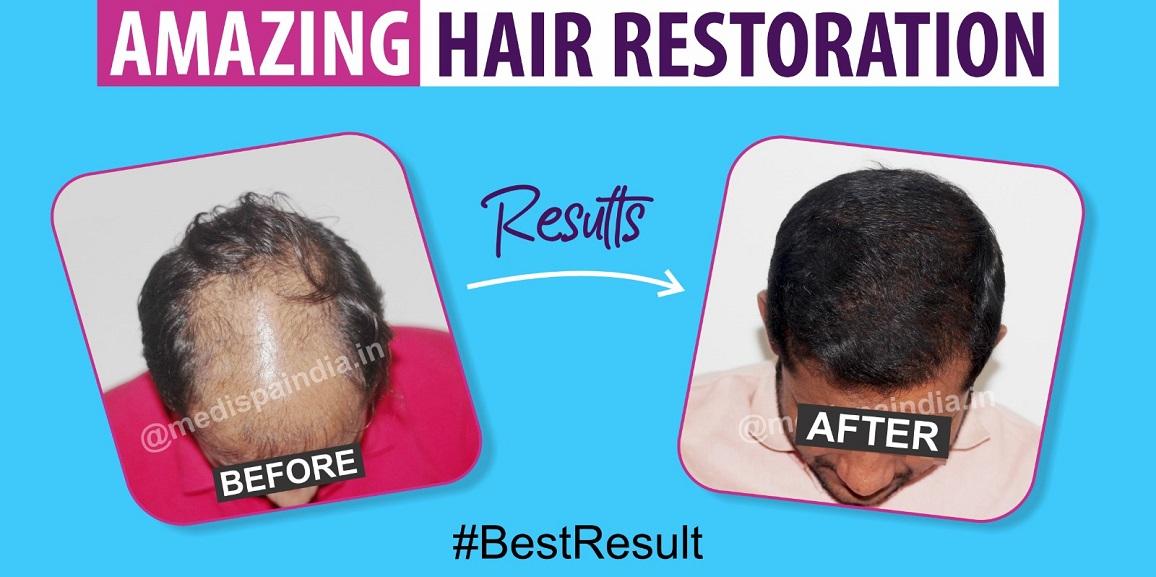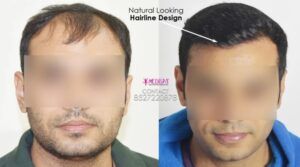
Some of us find hair loss to be an unwelcome occurrence that necessitates medical attention. In urban areas, where professions require a strong personality and good appearance even for highly skilled candidates, the impact of hair loss is especially noticeable. The most popular method for treating baldness is hair transplantation, and hair transplant in Jaipur has been identified as the top location for those with hair loss to undergo the treatment. Patients travel to Jaipur for the treatment primarily because of the world-class care and flawless results provided by a select few well-known hair transplant clinics, not just because of the affordable hair transplant cost in Jaipur. Hair transplant methods are widely recognized for their ability to yield exceptional results when performed by skilled practitioners. This restorative treatment involves transplanting hair grafts to the targeted bald region after they are harvested from donor sites, which are particularly places with permanent hair roots.
Over the years, advancements in technology have significantly improved the success rate of hair transplant procedures. Medispa Hair Transplant Clinic, a leading pioneer in the field, has a track record of over 10,000 successful hair transplant stories, establishing itself as a top destination for hair transplant tourism. Dr. Suneet Soni, known for his exceptional skills in creating natural-looking hairlines, performs all procedures himself and maintains the clinic’s reputation for excellence by not franchising or involving other doctors in the process.
What level of baldness do you have?
Doctors use the Norwood scale to evaluate the severity of your hair loss. Your condition can be categorized into seven different stages of baldness. Let’s examine the importance of each of these stages.
Class I: Entire hairline lies high on the forehead and is not actually balding.
Class II: Triangular areas of recession in the sides of frontal area and minimal recession on mid frontal area.
Class III: Borderline case. Deepening of triangular recession or can include thinning of hair on the vertex.
Class IV: Further frontal hair loss and widening of hair loss from vertex but still a wide band of hair present separating frontal and vertex hair loss.
Class V: Widening of frontal and vertex hair loss and continual breaking of separation line of hairs between frontal and vertex baldness.
Class VI: Band or bridge of hair disappear merging frontal and vertex baldness.
Class VII: A band ofhair presents only in back and side of the head.
How to identify the level of baldness?
Please provide your self-assessment of your baldness level now that you have knowledge of the various stages of baldness. The official website of the Medispa hair transplant clinic provides a useful tool known as the hair graft calculator, which can aid you in evaluating your degree of baldness. This calculator will help you determine the hair density needed to cover your current level of baldness and identify your current stage of baldness.
What are the methods of hair transplant?
There are two methods for conducting a hair transplant, and they are outlined as follows. Each method involves a distinct approach to extracting the hair grafts.
- The strip technique or FUT is utilized for the hair transplant procedure. This method involves the excision of a thin strip of skin from the donor area in order to harvest individual hair grafts. Each hair graft is then carefully placed in the desired bald area, ensuring the preservation of the natural hairline and preventing damage to the hair root. To facilitate rapid healing and minimize visible scarring, the donor area is sutured and closed.
- During an FUE hair transplant, a specialized tool is used to extract individual hair grafts from the donor area. The tool, which is similar to a punch, must be inserted at a precise depth and angle to ensure the hair graft is removed without causing any harm. Once the hair graft is carefully transplanted to the balding area, it is delicately removed from the patient’s skin.
How long does it take to heal post hair transplant?
The healing time for a hair transplant procedure varies from person to person. It is a surgical procedure that involves taking hair follicles from a donor area and implanting them into the balding area. Despite concerns about recovery, it is a minimally invasive procedure that allows individuals to resume their normal activities the day after the surgery.
Minor side effects such as mild discomfort, itchiness, or swelling in the forehead may arise. Nevertheless, these effects generally diminish within a few days following the surgery. Adhering to the safety precautions advised by your doctor is crucial in order to prevent them.
It is essential to seek advice from a certified doctor about your worries and obtain appropriate direction.
Which hair transplant method is the best for severe baldness? Why?
Each hair transplant method comes with specific criteria that are considered when choosing the most suitable technique based on the patient’s individual circumstances. Factors such as the patient’s age, gender, desired hair density, availability of hair in the donor area, extent of baldness, and quality of hair grafts all contribute to the decision-making process in selecting the optimal technique. The need for hair density stands out as a critical element in determining the most appropriate approach. For cases requiring a large number of hair grafts, FUT is typically recommended, whereas FUE may be more suitable for cases requiring a smaller number of grafts. The FUT technique can successfully harvest around 3000–3500 hair grafts, while the FUE technique typically yields 2000–2500 grafts.
Hence, FUT could be a suitable method for severe or advanced baldness and when a dense hair transplant is needed. The combination of FUT and FUE is appropriate for advanced baldness, like grade VI or VII, as it can effectively harvest over 4000 hair grafts in one session. In this combined approach, both FUT and FUE are performed in a single session, with FUT used to harvest most of the hair grafts and FUE used to extract the remaining ones.
It is essential to carefully choose the hair transplant technique based on the patient’s needs to avoid overharvesting the donor site and violating the safe zones. Breaching the safe zones can compromise the permanence of the results. Therefore, selecting a qualified hair transplant surgeon is crucial as they will ensure the best technique is used, leading to optimal results.







